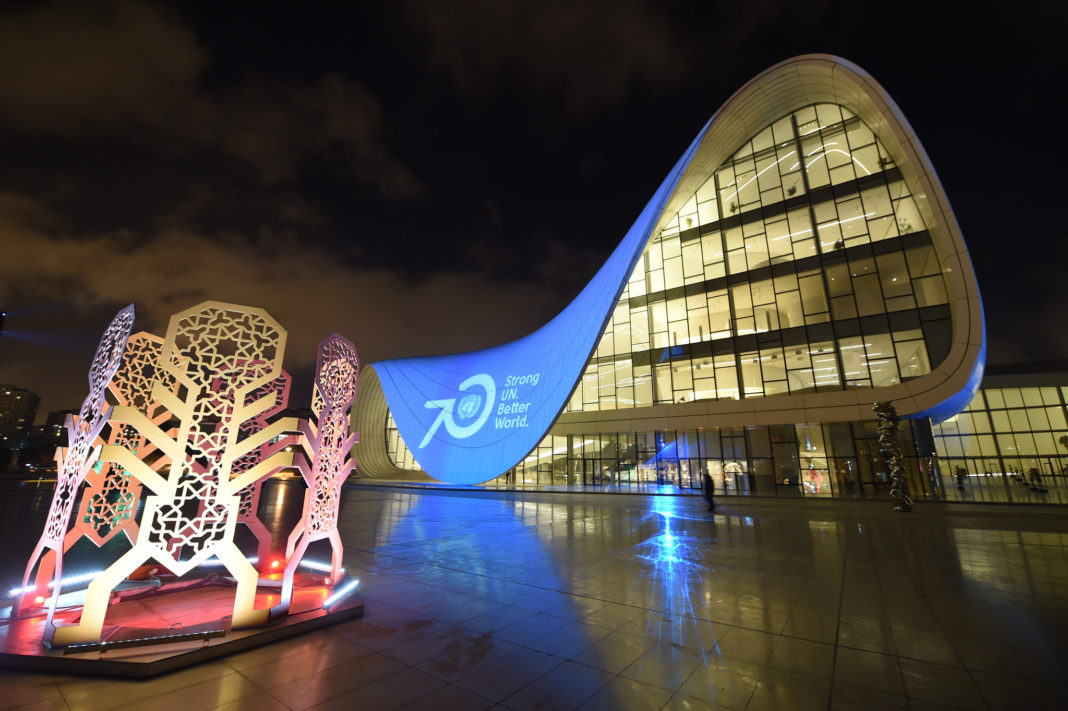The Heydar Aliyev Center is a 57,500 m2 building complex in Baku, Azerbaijan designed by Iraqi-British architect Zaha Hadid and noted for its distinctive architecture and flowing, curved style that eschews sharp angles. The center is named after Heydar Aliyev (1923–2003), the first secretary of Soviet Azerbaijan from 1969 to 1982, and president of the Azerbaijan Republic from October 1993 to October 2003.
Heydar Aliyev Center had an official soft-opening ceremony on 10 May 2012 held by the current president of Azerbaijan Ilham Aliyev.
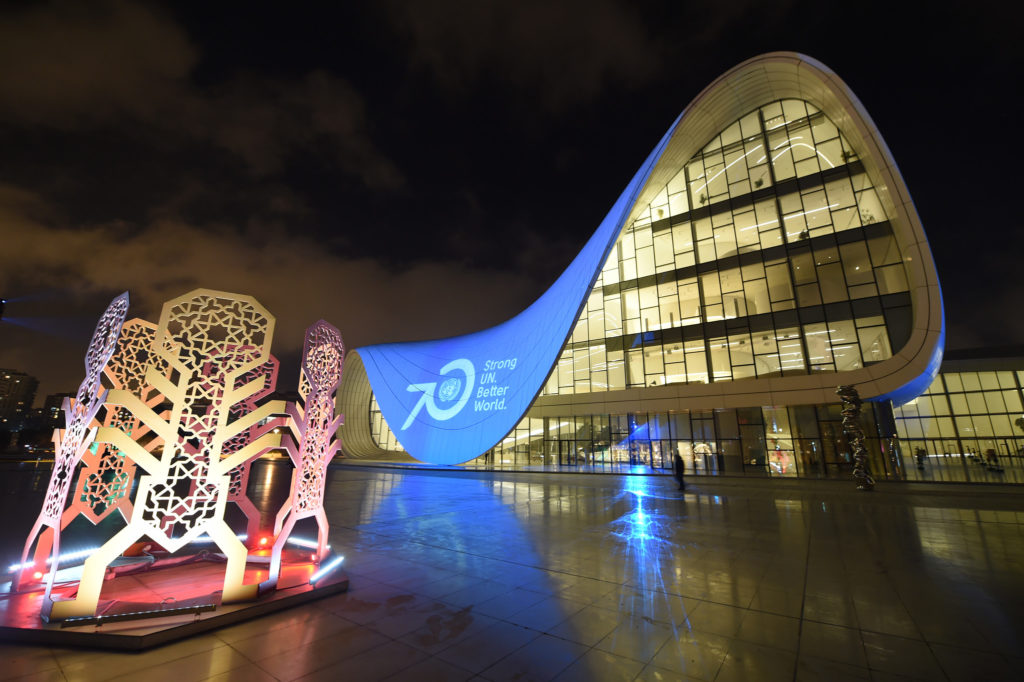
The Center houses a conference hall (auditorium), a gallery hall, and a museum. The project is intended to play an integral role in the intellectual life of the city. Located close to the city center, the site plays a pivotal role in the redevelopment of Baku.
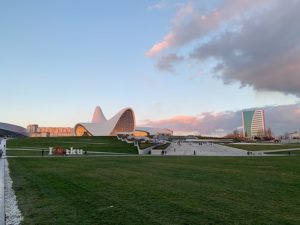
The Heydar Aliyev Center represents a fluid form that emerges by the folding of the landscape’s natural topography and by the wrapping of individual functions of the Center. All functions of the Center, together with entrances, are represented by folds in a single continuous surface. This fluid form gives an opportunity to connect the various cultural spaces whilst at the same time, providing each element of the Center with its own identity and privacy.
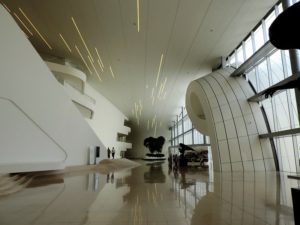
An internationally recognized architectural work, the building of the Heydar Aliyev Center has become a signature landmark of modern Baku due to its innovative and cutting-edge design. Extending on eight-floor levels, the center accommodates a 1000-seat auditorium, temporary exhibition spaces, a conference center, workshops, and a museum.
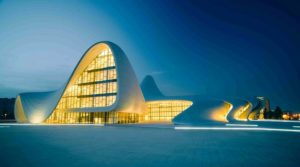
The building was nominated for awards in 2013 at both the World Architecture Festival and the biennial Inside Festival. In 2014, the Center won the Design Museum’s Design of the Year Award 2014 despite concerns about the site’s human rights record. This makes Zaha Hadid the first woman to win the top prize in that competition.
The Heydar Aliyev Center maintains close ties with a number of international agencies, peer structures abroad, museums, and exhibition centers. The Center has organized events and exhibitions as a result of joint cooperation with different organizations, museums, and exhibitions in Austria, Belgium, Great Britain, France, Italy, Russia, Slovenia, Turkey, and so on. At the same time, it has conducted a number of projects in Great Britain, Israel, Italy, Hungary, Romania, Russia, Turkey, Japan, and others. The Center has become a member of various international organizations.
According to Wikipedia





